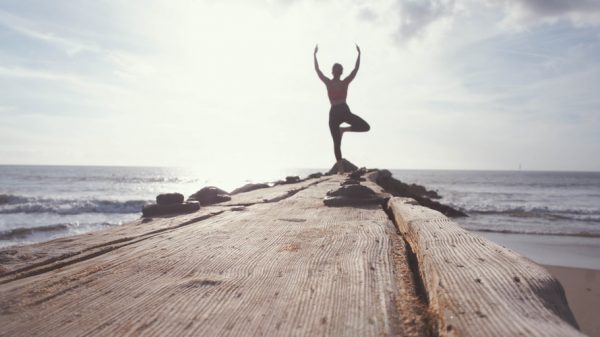
Yoga has millions of fans all over the world, from mindfulness enthusiasts to spiritual practitioners and celebrities, so it’s safe to say that it’s becoming a massive phenomenon and a way of life. As a beginner, you definitely won’t have any problems finding a personal yoga instructor, a local yoga class or even an online yoga course, but the question is: where should you start?
Yoga involves so much more than stretching and breathing techniques. In fact, there are several types of yoga, and knowing the difference between them will help you choose an option that best matches your goals, personality, and level of experience.
These are the 6 most popular types of yoga:
Hatha Yoga
Level: beginner
Hatha is actually an umbrella term describing all physical yoga practices and it’s the type of yoga that is taught in most gyms. Hatha is a slow paced, beginner-friendly yoga type that focuses on asanas and pranayama breathing, meditation, and basic postures. In Hatha exercises, movements are slow and fluid, the rhythm of the class is usually relaxed, so that you can learn the basics of stretching and relieve stress in a calm environment.
Vinyasa yoga
Level: beginner
Vinyasa is another popular type of yoga that’s suitable for beginners, but the rhythm is a bit faster and the exercises incorporate more movement. Unlike Hatha yoga, where you’re doing individual poses, Vinyasa yoga is also called a “moving meditation” because you’re going through a sequence of postures and breathing techniques.
Bikram yoga
Level: beginner
If you like Vinyasa yoga and you don’t mind heating things up a bit (literally!), then Bikram yoga is for you. The poses and breathing techniques are almost the same as in Vinyasa yoga, but the session takes place in a heated, sauna-like room (~40 degrees Celsius). The benefits of Bikram yoga include loosening muscle tension, stimulating fat burning, improving flexibility, and detoxing your body through sweating.
Kundalini yoga
Level: intermediate
From a physical perspective, Kundalini yoga is a bit more difficult because you will have to hold your arms and legs in the air for up to several minutes, and also switch quickly between various breathing techniques. Kundalini yoga is also a step up from a spiritual perspective, because it focuses more on meditation and chanting, encouraging you to tap into your inner energy, sync with your senses and unite with your being.
Yin yoga
Level: intermediate
Although the poses in Yin yoga are quite basic, what makes this type of yoga a bit more difficult is that you have to hold these poses for a long time, even up to five minutes. The aim here is to reduce the tension that forms in your connective tissues, helping you de–stress and be more patient.
Ashtanga yoga
Level: advanced
If you want your yoga routine to be challenging, Ashtanga yoga will not disappoint. This practice consists of eight parts, inspired from the eight limbs of yoga mentioned in the Yoga Sutras of Patanjali, and it’s a demanding, athletic type of yoga that requires you to have a lot of stamina and endurance.
So, which one should you start with? Well, if you have no prior experience with yoga, then it’s best to join a Hatha yoga course and familiarise yourself with basic yoga poses and breathing techniques. As you get better, you can decide if you want to continue with a type of yoga that focuses more on meditation, or one that’s more physically demanding.
Leave A Comment